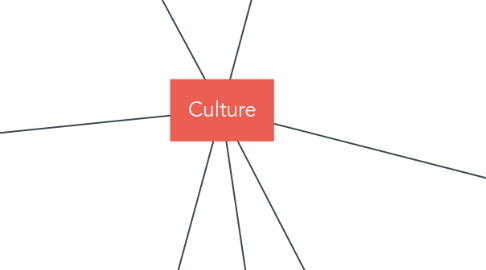Culture
Romain Stoffelsにより


1. Impacts
1.1. Culture affects performance and implies that managers should try to change their culture towards a more productive one.
1.2. Creating a culture resonant with the overall goals is relevant to any organisation, whether it be a trade union, voluntary group or producer co-operative.
2. Levels
2.1. Artefacts = visible level.
2.2. Beliefs and values = accumulated ideas that members hold about their work.
2.3. Basic underlying assumptions = way to work together
2.4. Power
2.5. Role
2.6. Task
2.7. Person
3. PESTEL Analysis
3.1. Technique for identifying and listing the... factors in the general environment most relevant to an organisation.
3.1.1. POLITICAL: influence the political decisions by employing lobbyists.
3.1.2. ECONOMICAL: state of economy also influences capital investment decisions.
3.1.3. SOCIO-CULTURAL: demographic changes, ethnic diversity, consumers' habits changement open new opportunities.
3.1.4. TECHNOLOGICAL: change the technological context.
3.1.5. ENVIRONMENTAL: sustainbility, alternative energy suppliers, emission control business and waste management companies are all experiencing rising demand.
3.1.6. LEGAL: laws on employment and trade unions affect the way managers engage with employees.
4. Definition
4.1. Set of values, belief, norms and assumptions that are shared by a group and that guide their interpretations of, and responses to, their environments.
4.2. Transcendent, evidence of the timeless unity of the human spirit (and) an oasis of agreed values in quarrelsome world.
4.3. Quality that pervades everything and makes a person feel home or just ordinary.
5. Explanations
5.1. People from common values; they use these to establish shared beliefs about how to behave towards each other and to outsiders. Positive outcomes reinforce their belief in the underlying values which then become a stronger influence on how people should work and relate to each other (rational goals, internal process, human relations, open systems).
6. Five Force Analysis
6.1. Technique for identifying and listing those aspects of the five forces most relevant to the profitability of an organisation at that time.
6.1.1. Threat of new entrants
6.1.2. Intensity or rivalry among competitors
6.1.3. Power of buyers
6.1.4. Bargaining power of suppliers
6.1.5. Threat of subsitutes
